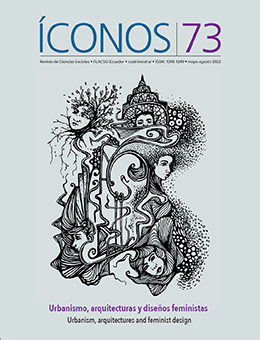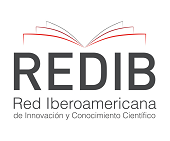Números de la injusticia ambiental: la medición de la impunidad en México
Resumen
En el Índice Global de Impunidad Ambiental México (2020) se desarrolla una metodología cuantitativa para medir los niveles de dicha categoría. Siguiendo la criminología verde se define impunidad ambiental, en un sentido amplio, para integrar la imposibilidad de investigar, perseguir, enjuiciar, sancionar y reparar los delitos y daños en contra del medioambiente; el incumplimiento de objetivos de política ambiental y climática, así como la inexistencia de estrategias y programas de políticas públicas intergeneracionales. Los resultados del índice evidencian que el desempeño de los estados en México se encuentra por debajo de la mitad del puntaje máximo que podrían alcanzar, lo cual refleja una política ambiental muy frágil, insuficientes capacidades institucionales para proteger los ecosistemas y la imposibilidad de garantizar el derecho a un medioambiente sano. En este trabajo se argumenta sobre la importancia de medir grados de impunidad ambiental como una forma de operacionalizar problemas de justicia; se discute el alcance de dicho concepto; se explica la metodología estructurada en cuatro dimensiones, 42 indicadores y el modelo estadístico que componen el índice; y se analizan los resultados obtenidos de manera desagregada. Como conclusión se destacan la necesidad de desarrollar sistemas de indicadores más confiables en materia ambiental, el valor explicativo de las capacidades institucionales y la complejidad involucrada en la medición de los delitos y el daño ambiental.
Descargas
Citas
Anton, Donald K. 2016. “Adding a green focus: The Office of the Prosecutor of the International Criminal Court highlights the ‘environment’ in case selection and prioritisation”. Documento de investigación n.º 17-03, Griffith Law School. https://bit.ly/3ACtD1l.
Arroyo Quiroz, Inés, y Tanya Wyatt. 2018. Criminología Verde en México. México: Universidad Nacional Autónoma de México.
Atapattu, Sumudu. 2018. “Extractive Industries and Inequality: Intersections of Environmental Law, Human Rights, and Environmental Justice”. Arizona State Law Journal 50: 431-454. https://bit.ly/35gCOZB.
Avilés, Hernando, Teresa de J. Rivas, María Elvia Chavarría, Jorge E. Muñoz y de Ángel de J. Jaimes. 2018. “Civil resistance vs environmental impunity in the bay of Puerto Marqués, Acapulco, Mexico”. WIT Transactions on Ecology and the Environment 227: 63-72. https://dx.doi.org/10.2495/ST180071
Barreto, Paulo, Marília Mesquita, Elis Araújo y Brenda Brito. 2009. A Impunidade de Infratores Ambientais em Áreas Protegidas da Amazônia. Belém: Instituto do Homem e Meio Ambiente da Amazônia. https://bit.ly/3ITJzzs
Baxi, Upendra. 2017. “Writing about impunity and environment: The ‘silver jubilee’ of the Bhopal catastrophe”. En Globalization and Common Responsibilities of States, editado por Koen De Feyter, 15-36. Nueva York: Routledge.
Biermann, Frank. 2020. “The future of ‘environmental’ policy in the Anthropocene: time for a paradigm shift”. Environmental Politics 30 (1-2): 61-80. https://dx.doi.org/10.1080/09644016.2020.1846958
Bowen, Rachel E. 2019. “The Weight of the Continuous Past: Transitional (In) Justice and Impunity States in Central America”. Latin American Politics and Society 61 (1): 126-147. https://dx.doi.org/10.1017/lap.2018.62
Boyd, David R. 2017. The Rights of Nature. Toronto: ECW Press.
Brisman, Avi. 2014. “Of Theory and Meaning in Green Criminology”. The International Journal for Crime, Justice and Social Democracy 3 (2): 21‐34. https://dx.doi.org/10.5204/ijcjsd.v3i2.173
Cedillo, Celeste, Juan Antonio Le Clercq y Azucena Cháidez. 2021. Índice Global de Impunidad Ambiental México 2020 (IGI-AMB 2020). Puebla: Universidad de las Américas Puebla.
Cedillo, Celeste, y Juan Antonio Le Clercq. 2021.“Green impunity: measuring ecojustice, institutional capacities and policy design as an approach to environmental security”. En Handbook of Security and the Environment, editado por Ashok Swain, Joakim Öjendal y Anders Jägerskog, 115-131. Cheltenham: Edward Elgar Publishing.
Constitución Política de los Estados Unidos Mexicanos. 1917. Diario Oficial de la Federación 5 de febrero, última modificación 28 de mayo de 2021. https://bit.ly/3KlxrHS
Coolsaet, Brendan, ed. 2020. Environmental justice: key issues. Abingdon, UK: Routledge.
Dryzek, John S. 1997. The Politics of Earth. Massachusetts: Oxford University Press.
Dryzek, John S. 2014. “Institutions for the Anthropocene: Governance in a Changing Earth System”. British Journal of Political Science 46 (4): 937-956. https://dx.doi.org/10.1017/S0007123414000453
Gibbs, Carole, Meredith L. Gore, Edmund F. McGarrell y Louie Rivers III. 2010. “Introducing Conservation Criminology. Towards Interdisciplinary Scholarship on Environmental Crimes and Risks”. British Journal of Criminology 50 (1): 124-144. https://doi.org/10.1093/bjc/azp045
Holifield, Ryan, Jayajit Chakraborty y Gordon Walker, eds. 2018. The Routledge Handbook of Environmental Justice. Nueva York: Routledge.
INEGI (Instituto Nacional de Estadística y Geografía). 2020a. “Encuesta Nacional de Victimización y Percepción sobre Seguridad Pública. Principales resultados”. https://bit.ly/3rT6vHY
INEGI. 2020b. “Censo Nacional de Derechos Humanos Federal. Principales resultados”. https://bit.ly/3pK9Zw2
Le Clercq, Juan Antonio. 2018. “El complejo impunidad”. En Derechos humanos y violencia en México, editado por Laura Loeza y Analiese Richard, 19-49. México: UNAM.
Le Clercq, Juan Antonio. 2020. “¿Tiene sentido medir la impunidad? Comparando el diseño de índices y estudios sobre impunidad aplicados al caso mexicano”. En La seguridad en el marco del Estado de Derecho, editado por Sonia Alda, Carolina Sampó y Gerardo Rodríguez Sánchez Lara, 263-299. Puebla: UDLAP / Universidad Nacional de La Plata / Real Instituto Elcano.
Le Clercq, Juan Antonio, y Gerardo Rodríguez Sánchez Lara, coords. 2018. La impunidad subnacional y sus dimensiones. Puebla: UDLAP.
Le Clercq, Juan Antonio, y Gerardo Rodríguez Sánchez Lara, coords. 2020. Dimensiones de la impunidad global. Índice Global de Impunidad 2017. Puebla: UDLAP.
Meadowcroft, James, y Daniel J. Fiorino, eds. 2017. Conceptual innovation in Environmental Policy. Massachusetts: MIT Press.
Middledorp, Nick, y Phillipe Le Billon. 2019. “Deadly Environmental Governance: Authoritarianism, Eco-populism, and the Repression of Environmental and Land Defenders”. Annals of the American Association of Geographers 109 (2): 324-33. https://dx.doi.org/10.1080/24694452.2018.1530586
Nwapi, Chilenye. 2017. “Accountability of Canadian mining corporations for their overseas conduct: Can extraterritorial corporate criminal prosecution come to the rescue?”. Canadian Yearbook of International Law 54: 227-275. https://doi.org/10.1017/cyl.2017.9
Provencio, Enrique. 2020. “Con los recortes presupuestales al medio ambiente, México compromete su futuro”. The Washington Post, 7 de julio. Acceso en junio de 2021. https://wapo.st/3u5tv9k
Ramírez Serrato, Nely Lucero. 2017. Mapeo y análisis espacial de conflictos ambientales en México. México: Secretaría de Medio Ambiente y Recursos Naturales. https://bit.ly/3AEAxmS
Rockström, Johan, Joyeeta Gupta, Timoteo Lenton, Dahe Qin, Steven J. Lade, Jesse F. Abrams, Lisa Jacobson, Juan C Rocha, Carolina Zimm, Xuemeibai, Govindasamy Bala, Stefan Bringezu, Wendy Broadgate, Stuart E. Bunn, Fabrice DeClerck, Kristie L. Ebi, Peng Gong, Chris Gordon, Norichika Kanie, Diana M. Liverman, Nebojsa Nakicenovic, David Obura, Veerabhadran Ramanathan, Pedro H. Verburgo, Detlef P. van Vuuren y Ricarda Winkelmann. 2021. “Identifying a safe and just corridor for people and the planet”. Earth's Future 9 (4): 1-7. https://dx.doi.org/10.1029/2020EF001866
Sacher, William. 2011. “El modelo minero canadiense: saqueo e impunidad institucionalizados”. Acta Sociológica 54: 49-67. http://dx.doi.org/10.22201/fcpys.24484938e.2011.54.25669
South, Nigel. 2014. “Green Criminology, Environmental Crime Prevention and the Gaps between Law, Legitimacy and Justice”. Ljubljana: Revija za kriminalistiko in kriminologijo 65 (4): 373-381. https://bit.ly/3rNLdv6.
Toledo, Víctor Manuel. 2015. Ecocidio en México. Ciudad de México: Grijalvo.
UNGA (United Nations General Assembly). 2018. Report of the Special Rapporteur on the issue of human rights obligations relating to the enjoyment of a safe, clean, healthy and sustainable environment. Nueva York: United Nations.
Vergara, Sofía. 2019. “Semarnat tiene registrados 560 conflictos socioambientales en México”. Proceso, 4 de septiembre. Acceso el 23 de junio de 2021. https://bit.ly/3IDGd36
White, Rob. 2013. “The Conceptual Contours of Green Criminology”. En Emerging Issues in Green Criminology, editado por Reece Walters, Diane Solomon Westerhuis y Tanya Wyatt, 17-33. Nueva York: Palgrave Macmillan.
White, Rob. 2018. “Green victimology and non-human victims”. Thousand Oaks, CA: International Review of Victimology 24 (2): 239-255. https://doi.org/10.1177/0269758017745615
Young, Oran R. 2002. The Institutional Dimensions of Environmental Change, Massachusetts: Institute of Technology Press.

Íconos - Revista de Ciencias Sociales bajo licencia Creative Commons Reconocimiento-SinObraDerivada 3.0 Unported License.














